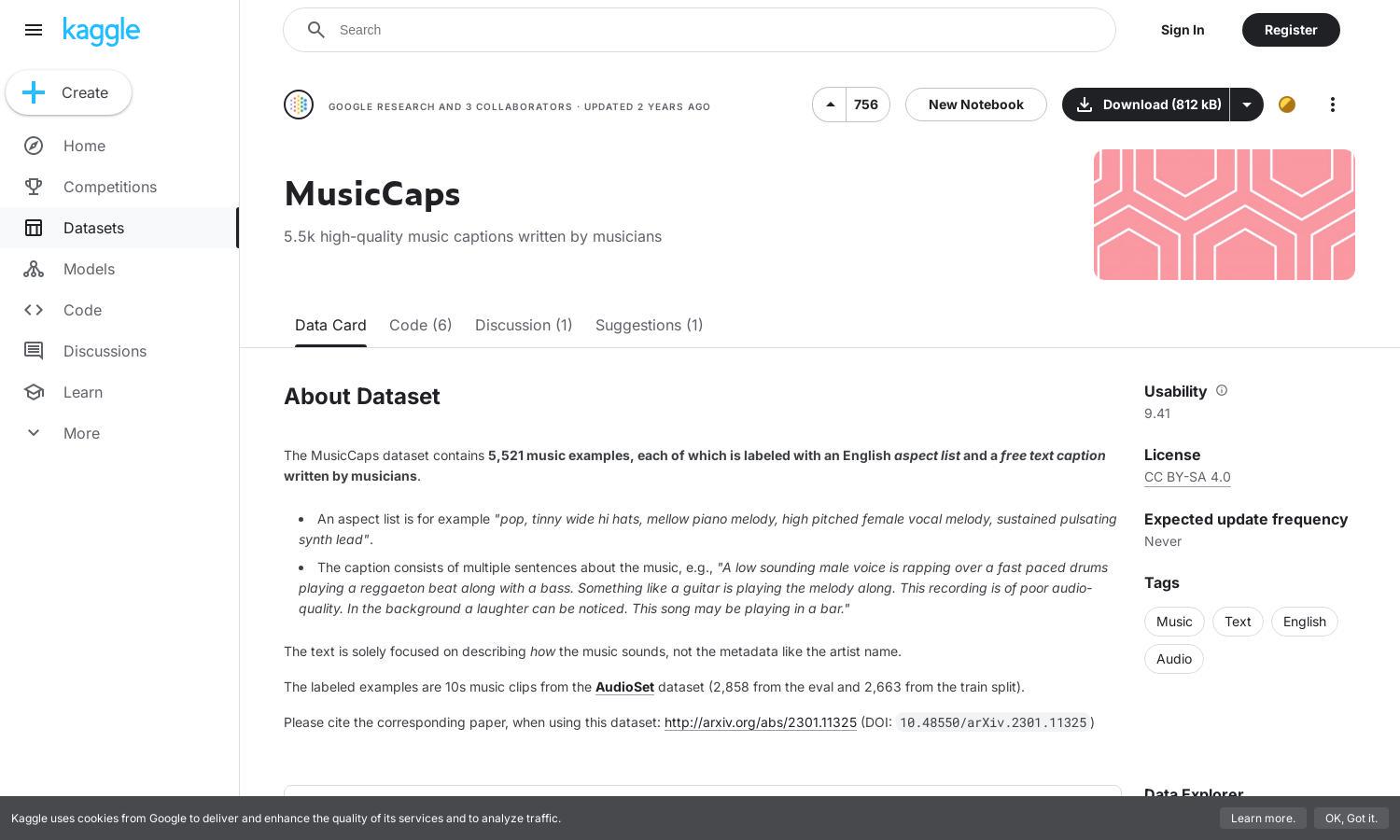Kaggle

About Kaggle
Kaggle's MusicCaps is a curated dataset designed for music analysis, containing 5,521 audio examples with detailed captions. Targeted at researchers and machine learning practitioners, it provides users with high-quality textual descriptions to enhance audio classification models, solving challenges in music representation and understanding.
MusicCaps offers free access to its dataset without any subscription fees. Users can download the dataset at no cost, which provides significant value for researchers and developers looking to enhance their AI models. The platform supports open collaboration and sharing within the data science community.
Kaggle's MusicCaps features an intuitive interface that allows users to easily navigate through dataset files and descriptions. Its user-friendly layout, combined with effective search capabilities, enhances the browsing experience, making it simpler for users to access valuable audio music insights and data.
How Kaggle works
Users can easily interact with MusicCaps by signing up on Kaggle and accessing the dataset. Following onboarding, they can browse or search for specific music captions and download the dataset files directly. This seamless integration facilitates research and analysis, promoting engagement with music data.
Key Features for Kaggle
High-Quality Music Captions
MusicCaps stands out by providing high-quality captions for each of its 5,521 music examples. This unique feature allows users to enhance audio classification models effectively, fostering better understanding and analysis of music attributes through detailed musician-written descriptions.
Diverse Audio Examples
The dataset includes a wide variety of audio examples from different music genres, enhancing its usability for diverse research projects. MusicCaps caters to various analytical needs, allowing users to explore and model music data across different styles and representations effectively.
English Aspect Lists
MusicCaps offers labeled English aspect lists alongside audio clips, providing analytical depth. These aspects help users understand music characteristics better, making dataset analysis straightforward and enriching the overall experience for researchers focused on audio classification and music understanding.








